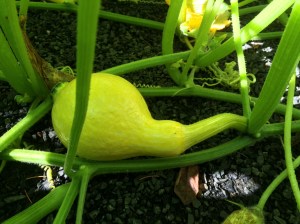Today I will list a few interesting societies/groups focusing on preserving and propagating rare, endangered heirloom plants.
The top picture above shows ‘La France’ of 1867; considered the first hybrid tea. Most of the old roses are exquisitely beautiful and quite worth collecting. Newcomers are amazed at the diversity of species and cultivars of roses. My collection centers on roses from the era of the Oregon Trail, 1830-1869. Here are two excellent antique rose societies:
The Heritage Rose Foundation, P.O. Box 1719, Gonzales, LA 70707. This is a non-profit organization, as are all listed here. Individual yearly membership is $35.00; there are other membership rates available as well. Their well illustrated and scholarly journal, Rosa Mundi, published twice a year, is included with your membership. Their website is: www.heritagerosefoundation.org
The Heritage Roses Group, 22 Gypsy Lane, Camarillo, CA 93010. Membership is $10.00 for digital format and $16.00 for the printed format. Their journal is called The Rose Letter, published four times a year. Their website: www.theheritagerosesgroup.org
Another wonderful organization is: The American Primrose Society, Jon Kawaguchi, Treasurer, 3524 Bowman Ct. Alameda, CA 95402. Individual membership is $25.00 a year. The journal of APS, Primroses, is published four times a year. Often included are articles about Primula species as well as rare, antique primroses and auriculas. Auriculas were once one of the most popular flowers of all, especially in the first half of the 19th century. Their website: www.americanprimrosesociety.org
The second photo above is of the bearded Iris violacea grandiflora from 1856. I collect as many antique iris as I can; they are truly beautiful and easy to grow in most areas of the U.S. An excellent, well-organized society concerning old iris is the Historic Iris Preservation Society (H.I.P.S). Annual membership is $13.00 for individuals; there are other membership categories available as well. I am a lifetime member. Their address: H.I.P.S, Judy Eckhoff, 7911 S. Yoder Rd., Haven, KS 67543. The well illustrated, scholarly journal of H.I.P.S. is published two times a year. An email contact is: judy67543@gmail.com
The third picture above is of Broccoli ‘Calabrese’ an antique vegetable from before 1880. It originated in Italy and is productive, having many side shoots that add to the harvest. I am listing two societies concerned with preserving heirloom vegetables.
Native Seed/SEARCH is a terrific seed exchange organization. They have concentrated on saving many older, even ancient vegetables grown by Native Americans, especially those grown, or once grown, in the Southwest. Some crops lost to certain native groups have been propagated and returned to their source by this organization. Annual membership is $35.00. Their newsletter, The Seedhead News is sent three times a year. Their address: Native Seeds/SEARCH, 3061 N. Campbell Ave., Tucson, AZ 85719. Their website: www.nativeseeds.org
The Seed Savers Exchange is another well organized society concerned with the preservation of heirloom vegetables and fruits. Members often exchange seeds. This society holds one of the largest collections of heritage apples in the U.S. Yearly membership is 25.00. They publish The Heritage Farm Companion magazine. Their address: Seed Savers Exchange, 3094 N. Winn Rd., Decorah, IA 52101. Their website: www.exchange@seedsavers.org












